







 |
||||||
 |
 |
 |
 |
 |
 |
 |
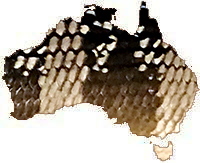
| About: The
bluetongue skinks are found in
Australia, New Guinea and on the
islands of Indonesia. They get their
name from their bright blue tongue,
which they use as a threat display.
The western bluetongue (Tiliqua
occipitalis) is a boldly patterned
species with alternating cream and
tan to dark brown transverse bands
across the body. The dark bands are
lighter along the sides and darken
as they move dorsally. They have a
bold occipital stripe behind the
eyes to the back of the head. There
is also white speckling throughout
the dark pattern elements along the
dorsal surface. Range: The western bluetongue is a species that ranges across the western and southern coast of Australia, with an extension of the range up into central Australia entering the Northern Territory. The range extends into the northwestern corner of Victoria and into New South Wales and potentially into Queensland. Habitat: These skinks are found in a variety of habitats, including coastal heathlands and arid desert habitat. I have only found DOR individuals on my trips to Australia, which were found in coastal habitat in Western Australia with sandy soil and low-lying shrubs as well as in central Australia near Uluru. Natural History Notes: The western bluetongue skinks are omnivores, feeding on snails, insects, vegitable matter, and even carion. This is one of the nice aspects of keeping these lizards in captivity, as they can be fed a variety of food items. Tiliqua occipitalis tends to be a little more shy than the Northern bluetongue. They appreciate ample hiding spots and a deeper substrate. They are generally only observed at dusk and dawn and tend to spend the heat of the day under cover. They come from arid areas that have hot daytime temperatures with around a 20˚F drop in temperature from day to night. Winters also get down to 40˚F in some parts of their range, so they need a cool down period in the winter to mimic their natural environment and to stimulate breeding. General Notes: We obtained a proven pair of western bluetongues in 2018 and hope to offer these rare lizards in the near future. They are somewhat smaller than the northern bluetongues, but are similar in their care and husbandry. |
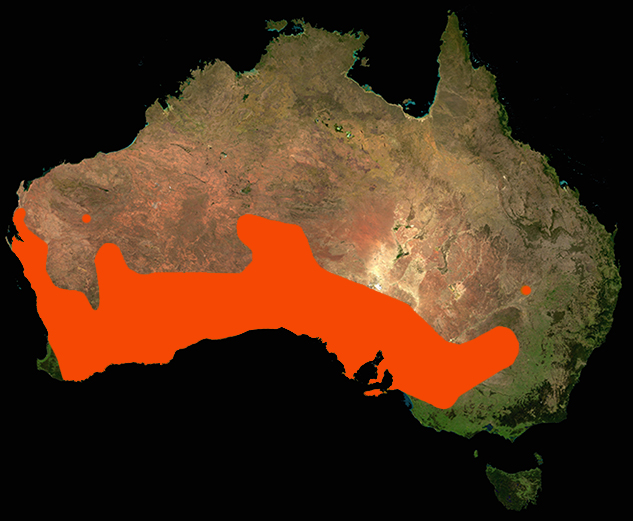 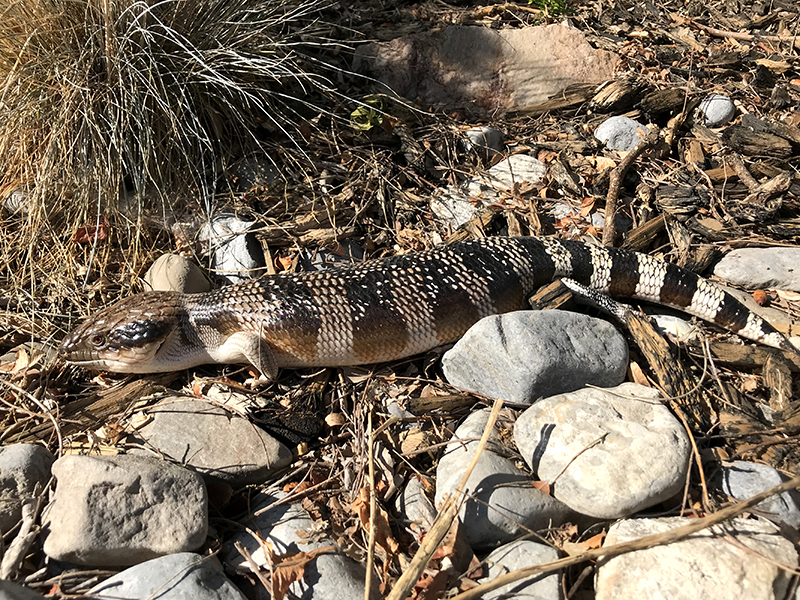
Female western bluetongue
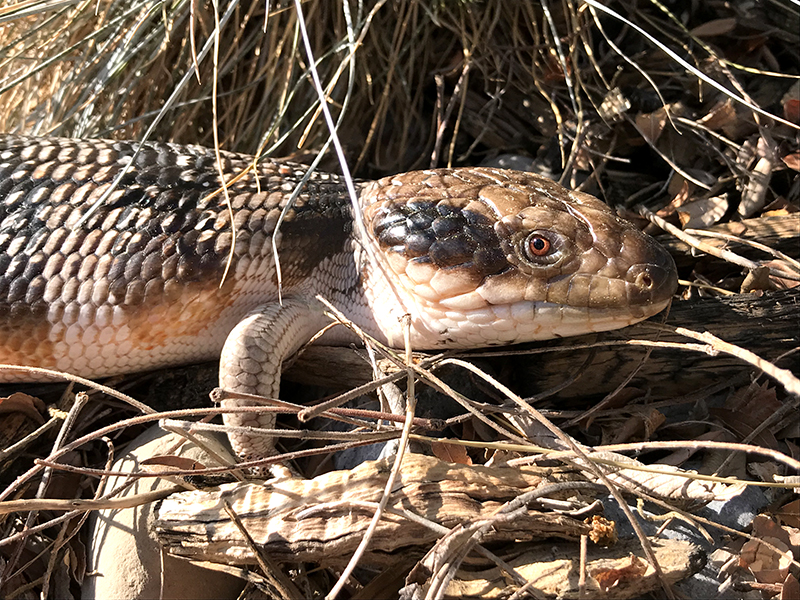
Western
bluetongues have a distinct occipital stripe
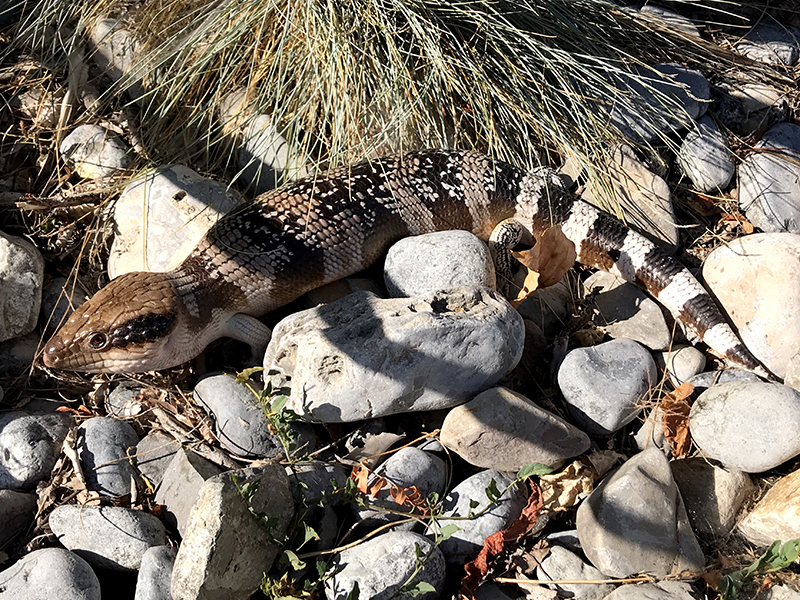
Male western bluetongue skink
|
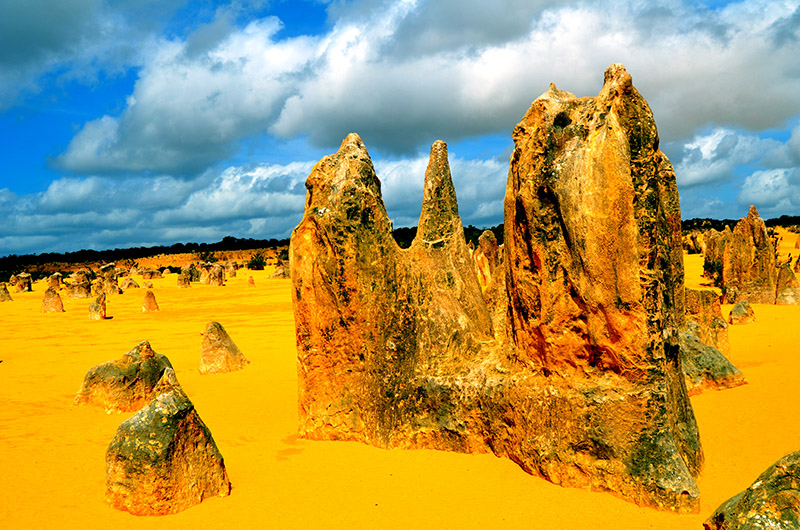 Western BTSs have been observed among
the Pinnacles in Nambung NP, WA
|
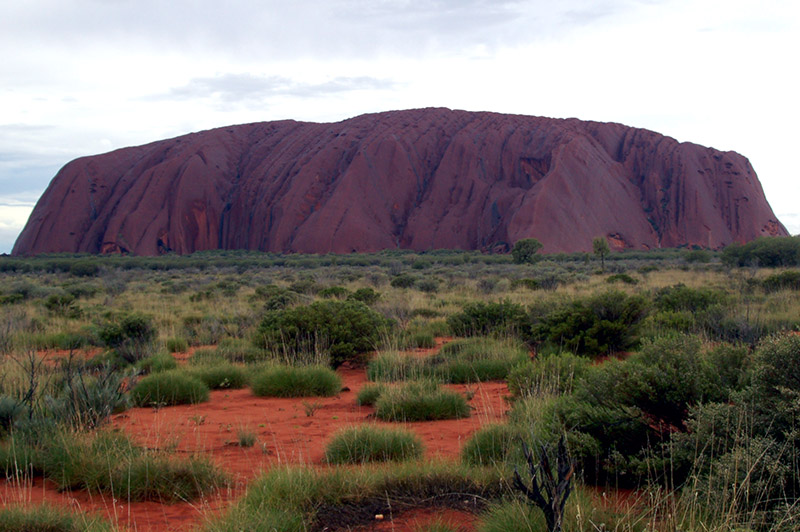 A
recently hit Western BTS was observed on the road
to Uluru
|